|
|
Electric Avenue: The Role of Electronics in Formula 1
13.10.2008
To even a casual observer, it is clear a Formula 1 car would be largely useless without tyres, a chassis or an engine – but what about electronics?
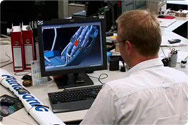
You may not think you see electronics at work when Panasonic Toyota Racing hits the track, but without electronic wizardry, the cars would not even leave the garage.
“If you removed the electronics from the car, it would not even start,” says Ludwig Zeller, Senior Manager Electric and Electronic at Panasonic Toyota Racing. “It would not run; there would be no action. You could look at the car; you could push the car – but nothing else.”
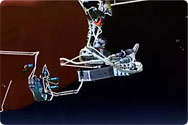
An electronic control unit (ECU) monitors and manages all aspects of the TF108’s electrical systems and it is this device which is fundamental to simply starting the engine, let alone getting the best possible performance from it lap after lap. “The ECU in the car is like the nerve centre for your body,” explains Ludwig. “Basically it is controlling all of the functions.”
Electronics in a Formula 1 car can be roughly divided into two categories; those that control aspects of the car, and those that monitor the car’s behaviour.
There are around 250 sensors on the TF108, giving feedback on approximately 1,300 different parameters. The data from these sensors can be studied back in the garage and it is used to advise the driver what settings to change on his car; an action he can complete whilst driving flat–out.
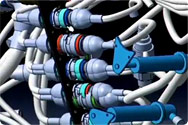
Like a road car, the TF108 draws its electricity from an alternator and stores it in a battery under the driver’s seat, although these specialised units are significantly smaller and lighter while the battery is designed to be extremely resistant to the vibrations which come with driving at over 300km/h.
From the ultra high–tech seamless shift, semi–automatic gearbox and settings on the 2.4litre V8 engine right through to the driver’s drinks bottle, many aspects of the TF108 are controlled by electronics on the steering wheel.
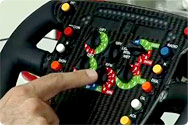
“The steering wheel is the most important interface for the driver,” Ludwig says. “From the steering wheel he can change almost everything. If there is change in conditions, for example if the weather changes from dry to wet, he has to adapt all his settings for the brakes, for the engine, for differential, for the gearshift. He really can control the car.”
Formula 1 rules place strict limits on what can be done electronically, so it is no longer possible to alter any aspect of the car’s behaviour remotely from the pit garage. However, using dials and switches on his steering wheel, a driver can still make significant adjustments himself. One major aspect the driver can influence from his steering wheel is the fuel economy of his engine.
While it may seem that a Formula 1 car is flat-out at all times, there are times when reduced fuel consumption will not negatively affect overall performance but could provide a strategic advantage, when stuck behind a slower rival or behind a safety car for example.
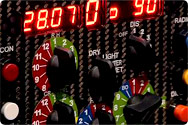
Senior General Manager Engine Luca Marmorini reveals: “There are two switches for engine control on the steering wheel. In particular one allows the driver to change the engine map, allowing him to choose one of several options – each one corresponds to a different fuelling of the engine.
“Typically number one is the performance fuelling map, and he has then four other possible maps where he can save fuel during the lap. Sometimes it’s very important to save fuel for delaying a pit stop, for example.”
With such a vital role played by electronics, these systems – like everything else on the car – must be tested thoroughly to get the best possible performance, and for this a specialised testing unit, called a ‘hardware in the loop’ (HIL) system, has been developed.
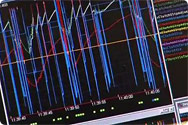
This unit contains all the TF108’s electronic systems and allows engineers to run through laps of a circuit in specific situations to ensure maximum performance; without needing a TF108 or its engine. Ludwig adds: “The HIL simulation is basically our car. We can simulate everything, we can play back track data and we can simulate problems for our car.”
Formula 1’s electronic rules became stricter at the start of 2008 when a standard ECU was introduced, meaning all teams must use the same part with no modifications; greatly reducing the freedom given to the electronic experts at Panasonic Toyota Racing. As a consequence, so–called driver aids such as traction control, engine braking and launch control have been eliminated.
But that does not mean the electronics specialists in Cologne have an easy life this season, far from it. The HIL system has been particularly valuable in understanding the standard ECU and streamlining how it is used within the TF108.
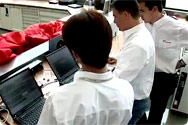
Luca says: “You never stop to learn how an ECU works because each time you need to check the reaction of your driver, of your car, and to tune all your parameters to do the best job. So I would say we are definitely still learning about it. The team did an excellent job to adapt and since the beginning of the year we have been well prepared, even if the learning process is continuous.”
The removal of driver aids and the introduction of a standard ECU may have taken Formula 1 electronics out of the spotlight, but those rule changes have not diminished the fundamental importance of electronics to the performance of Panasonic Toyota Racing. Whenever the cars line up on the grid, remember, it is not just the atmosphere which is electric.
movies |
||||
|
